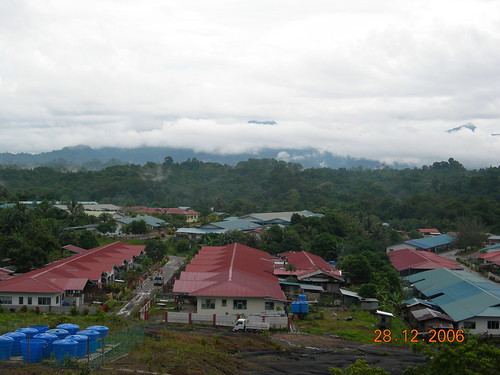
Chronicle of a visit to Long Bedia community, deep in the jungles of Malaysian Borneo. While deforestation is the main activity, the inhabitants of the region of Sarawak want to avoid the deforestation of the jungle, to disappear, would affect the cycles of a devastating storm.
Deep Forest:
The community is called Long Bedia Jok. The names of ethnicity refer to those living “upstream”, but are also known as kayan, the name under which marched from Apau Kayan in Kalimantan, the area of the island of Borneo belongs to Indonesia. Kalimantan abandoned when the farmland were exhausted and settled in various parts of northern Sarawak, especially in the vicinity of the Baram river, Rejang and Tubau, where they still live in communal long houses.
During World War II Japanese occupation, some members of these communities abandoned their land to migrate into the jungle, crossing the little river canyon Durian, which also gives name to that indescribable smell fruit found in all markets. There, isolated from the world, kayan could maintain a lifestyle that has remained, until very recently, and looks away from interference.
The orang ulu, as the Dayak and other tribes of Borneo, have lived since time immemorial in log cabins of many meters long that received most of the members of the community. Each family had a space, but the corridor was the common area over which they could reach up to 68 doors aligns. Over time, some of these long houses have become the target of an avid tourist ethnographic purity, without ceasing to be a mere representation of what once was. Long Bedia, hidden in the depths of the jungle, accessible only after more than four hours of road dotted with holes and craters or by almost a day of river navigation, has been far from the tourist circuits of large agencies and longhouses remaining in the village do not try to imitate the styles of yesteryear are modern houses, real, and its inhabitants, who despite not wearing traditional habits continue to maintain the spirit of hospitality.

Paradise of Biodiversity:
In Long Bedia, despite its relatively short history, you know what are the major projects and the vicissitudes of a market economy. In the late ’60s, this whole area began to live in modern planting techniques and farm, while from the same community was boosted social care policies, such as building schools, libraries and hospitals, so far neglected. After a decade of stability and as a result of education received by younger members migrated to cities to continue their studies or get better jobs, until, close and ’80s, with the arrival of the timber industry, young people preferred to stay in nearby areas and work for them. And the industry, which brought money, has also brought the destruction of the country’s main asset: its unbelievable nature.
Malaysia is among the 17 countries that are home to 70% of the planet’s biodiversity. More than 12,000 plant species, 1,100 types and plants, 300 of wild mammals, 750 reptiles, 165 amphibians and 300 freshwater fish. But all this natural heritage is threatened by increased urbanization and deforestation.
Care for the Eco-tourism in Malaysia!
Leave a Reply
You must be logged in to post a comment.
Recent Comments